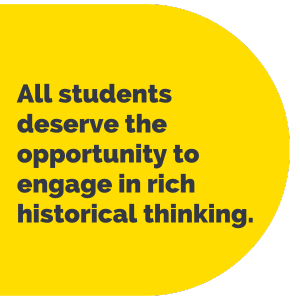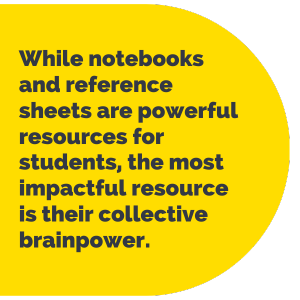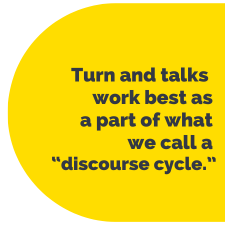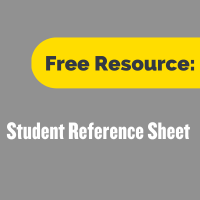History teachers want students to engage deeply with complex, primary sources. Yet some teachers may be reluctant to assign these texts because of this complexity, in addition to concerns about students’ reading levels. But all students deserve the opportunity to engage in rich historical thinking. With a strategically placed knowledge drop, alongside intentionally organized resources, we can prepare students to analyze sources in a way that keeps the cognitive demands high and the scaffolding low.

In Part 4 of our book, Make History: A Practical Guide for Middle and High School History Instruction, we visit Scott Kern’s Advanced Placement US History class to see these moves in action.
Drop Knowledge
For the day’s inquiry, Scott has adapted the Stanford History Education Group lesson, “Why did the Homestead Strike turn violent?”* To successfully answer the question, students will analyze two primary source documents: an excerpt from socialist activist Emma Goldman’s autobiography and a newspaper interview with plant manager Henry C. Frick.
Scott knows students have enough historical context to get the gist of both sources, but he anticipates a place where they might get stuck. As you watch the video below, consider: how does he prepare them for the challenge?
By defining a key term (Pinkerton Detectives) right before students needed it, Scott provides the information they needed to unlock the sources on their own. We call this move “drop knowledge,” which you may recognize as a type of frontloading. Frontloading gives students key definitions and/or historical context before they’ll need it, typically at the start of a lesson. This move helps students independently navigate complex sources, in this case, grappling with differing perspectives on the Homestead Strike. Frontloading is typically a teacher-led move. Try the moves that follow to put more power in students’ hands.
Student Notes
As you can see in the video, Scott’s students are not passive listeners; they are active learners. During his mini-lessons, they record their growing understanding in the form of Cornell notes. These notebooks serve as a critical resource that students can use to place the primary source document within its proper historical context. Within the notes, students can answer the key question of what was happening at the time the document was produced as well as explain its intended purpose and/or audience.
Students regularly update their notes with new information and take great pride in their quality and neatness. To keep the level of feedback high, Scott periodically collects and grades for organization and completion.
Organized notebooks lay the groundwork for a coherent story of the past. The following resource completes it.
Student Reference Sheets
 Each student in Scott’s class has a reference sheet, often called a knowledge organizer, with key information (dates, definitions, people) relevant to the Industrial Revolution. This one-pager is a critical scaffold to learning throughout the unit. Students use it to answer basic questions, which frees up their thinking to tackle deeper questions and allows Scott to spend more time facilitating discourse and coaching understanding. Reference sheets also help students prioritize the knowledge that is most important within a unit and encode that into their long-term memory over time. We’ve included a sample reference sheet for you, here. (For more information on how to use knowledge retrieval to powerlearning, read Part 2 of Make History).
Each student in Scott’s class has a reference sheet, often called a knowledge organizer, with key information (dates, definitions, people) relevant to the Industrial Revolution. This one-pager is a critical scaffold to learning throughout the unit. Students use it to answer basic questions, which frees up their thinking to tackle deeper questions and allows Scott to spend more time facilitating discourse and coaching understanding. Reference sheets also help students prioritize the knowledge that is most important within a unit and encode that into their long-term memory over time. We’ve included a sample reference sheet for you, here. (For more information on how to use knowledge retrieval to powerlearning, read Part 2 of Make History).
While notebooks and reference sheets are powerful resources for students in Scott’s class, perhaps the most impactful resource is their collective brainpower. For this, Scott turns to a tried-and-true method: the turn-and-talk.
Turn and Talks
Rather than saving student talk for the end of the lecture or class period, Scott strategically inserts turn-and-talks throughout the lesson. This gives students multiple opportunities to make sense of new evidence and push limited thinking with the help of their peers. This collaborative sensemaking drives home a key point of learning history: we can best make sense of the past together. As students actively examine and evaluate viewpoints and evidence in partnership, and clarify misunderstandings, they arrive at more nuanced understandings.
we can best make sense of the past together. As students actively examine and evaluate viewpoints and evidence in partnership, and clarify misunderstandings, they arrive at more nuanced understandings.
If you’re not sure in a lesson where to place turn-and-talks, use the following guidance:
Turn and talks can work at almost any point in a lesson, but they work best as a part of what we call a “discourse cycle.” (See Part 4 of Make History for more details). Here’s a condensed version of the cycle:
- Introduce the prompt: This can be the central historical question or a related question.
- Have students independently examine, read, and annotate the evidence.
- Ask students to turn and talk to share ideas and questions.
- After circulating to listen and contribute to conversations, call the group together to discuss the thinking in the room.
- Repeat the cycle as necessary throughout the remainder of the lesson.
Dropping knowledge, notetaking, reference sheets and turn-and-talks are simple, yet powerful moves that help students make meaning of the past without watering down the source. For more strategies on how to increase access for students, read Parts 2-4 of Make History.
*1892, Homestead, PA: When wage negotiations broke down between steel workers and Carnegie Steel mill manager Henry Frick, the unionized workers declared a strike, surrounding the factory. In response, Henry Frick sent an armed militia to regain access to the mill. Gun fire broke out soon after.
Click below for PDF of the resource referenced above:



